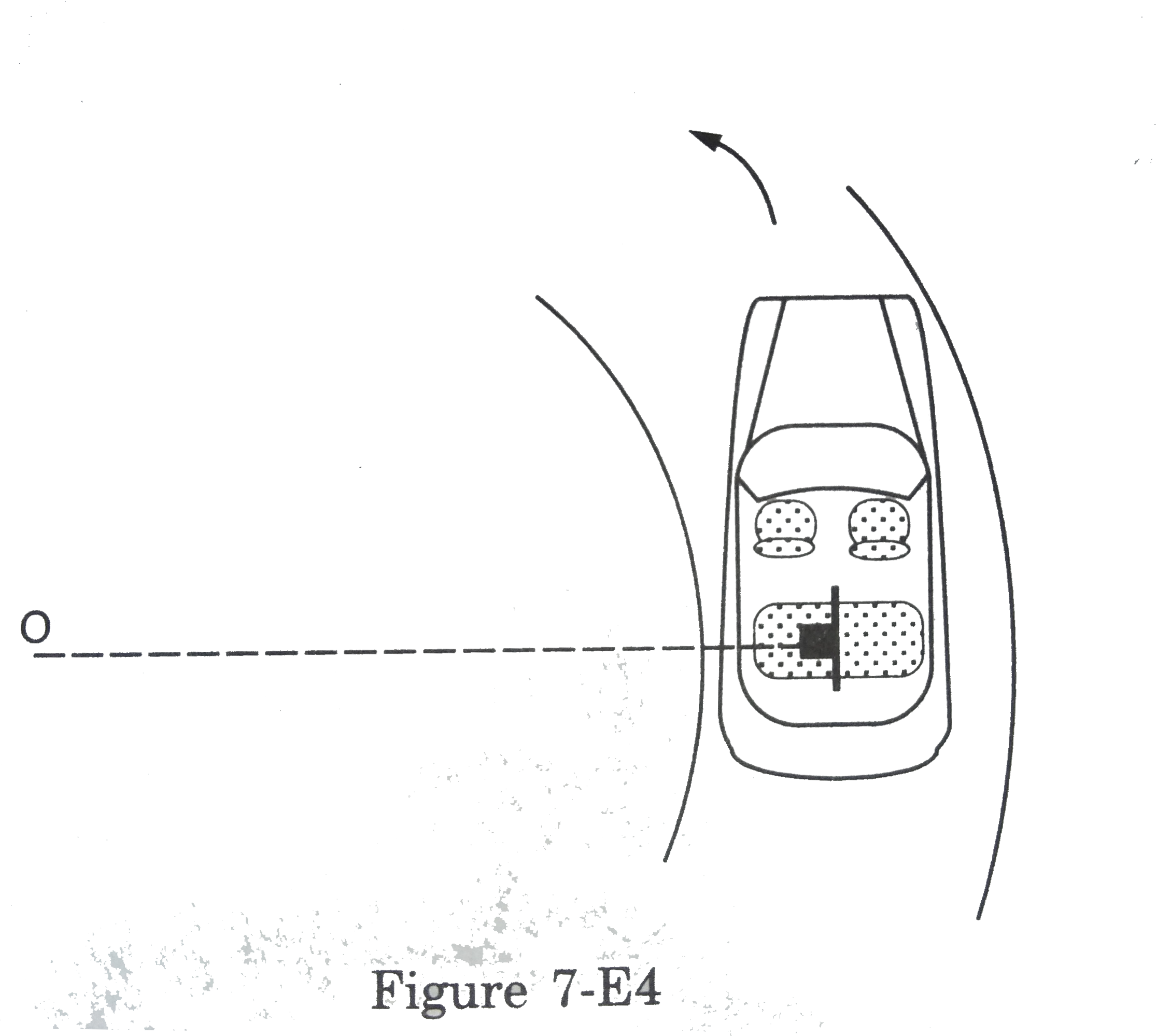A circular road of radius 50 m has the angel of banking equal to 300. At what speed should a vehicle go on this road so that the friction is not used?
The correct Answer is:A
To solve the problem of determining the speed at which a vehicle should travel on a circular road of radius 50 m with a banking angle of 30∘ such that friction is not used, we can follow these steps:
Step 1: Understand the Forces Acting on the Vehicle
When a vehicle moves on a banked circular road, the forces acting on it are:
- The gravitational force (mg) acting downwards.
- The normal force (N) acting perpendicular to the surface of the road.
Step 2: Set Up the Force Equations
Since the vehicle is on a banked curve and friction is not used, the normal force provides the necessary centripetal force for circular motion. The components of the normal force can be expressed as:
- Nsinθ provides the centripetal force.
- Ncosθ balances the weight of the vehicle (mg).
Step 3: Write the Equations
From the force balance, we have:
1. Nsinθ=mv2r (centripetal force)
2. Ncosθ=mg (weight balance)
Step 4: Divide the Two Equations
Dividing the first equation by the second gives:
NsinθNcosθ=mv2/rmg
This simplifies to:
tanθ=v2rg
Step 5: Substitute the Values
Given:
- θ=30∘
- r=50m
- g=9.81m/s2
We know that tan30∘=1√3. Substituting this into the equation gives:
1√3=v250⋅9.81
Step 6: Solve for v2
Rearranging the equation to solve for v2:
v2=50⋅9.81√3
Step 7: Calculate v
Now, calculate v:
v=√50⋅9.81√3
Calculating the values:
v=√490.5√3≈√283.5≈16.82m/s
Final Answer
The speed at which the vehicle should go on this road so that friction is not used is approximately 16.82m/s.
---
When a vehicle moves on a banked circular road, the forces acting on it are:
- The gravitational force (mg) acting downwards.
- The normal force (N) acting perpendicular to the surface of the road.
Since the vehicle is on a banked curve and friction is not used, the normal force provides the necessary centripetal force for circular motion. The components of the normal force can be expressed as:
- Nsinθ provides the centripetal force.
- Ncosθ balances the weight of the vehicle (mg).
From the force balance, we have:
1. Nsinθ=mv2r (centripetal force)
2. Ncosθ=mg (weight balance)
Dividing the first equation by the second gives:
NsinθNcosθ=mv2/rmg
This simplifies to:
tanθ=v2rg
Given:
- θ=30∘
- r=50m
- g=9.81m/s2
1√3=v250⋅9.81
Rearranging the equation to solve for v2:
v2=50⋅9.81√3
Now, calculate v:
v=√50⋅9.81√3
Calculating the values:
v=√490.5√3≈√283.5≈16.82m/s
The speed at which the vehicle should go on this road so that friction is not used is approximately 16.82m/s.
Topper's Solved these Questions
- CIRCULAR MOTIONBook:HC VERMA ENGLISHChapter:CIRCULAR MOTIONExercise:Question for short Answer
Explore 10 Videos
- CIRCULAR MOTIONBook:HC VERMA ENGLISHChapter:CIRCULAR MOTIONExercise:Objective -2
Explore 6 Videos
- CENTRE OF MASS, LINEAR MOMENTUM, COLLISIONBook:HC VERMA ENGLISHChapter:CENTRE OF MASS, LINEAR MOMENTUM, COLLISIONExercise:Objective -2
Explore 11 Videos
- FLUID MECHANICSBook:HC VERMA ENGLISHChapter:FLUID MECHANICSExercise:All Questions
Explore 90 Videos
Similar Questions
A circular road of radius 50m has the angle of banking equal to 30∘ . At what should a vehicle go on this road so that the friction is not used?
View SolutionThe road at a circular turn of radius 10 m is banked by an angle of 100. With what speed should a vehicle move on the turn so that the normal contact force is able to provide the necessary centripetal force?
View SolutionFigure shows a 11.7 ft wide ditch with the approach roads at and angle of 150 with the horizontal. With what minimum speed should a mororbike be moving on the road so that it safely croses the ditch?

Assume that the length of thebike is 5 ft, and it leaves the road when the front part runs out of the approch road.
View SolutionA car starts rest, on a horizontal circular road of radius R, the tangential acceleration of the car is a. The friction coefficient between the road and the tyre is μ Find the speed at which car will skid and also find the distance after travelling it skids.
View SolutionAn inclined track ends in a circular loop of radius r. From what height on the track a particle should be released so that it completes the loop, assuming there is no friction ?
View SolutionA circular road of radius r is banked for a speed v=40 km/hr. A car of mass m attempts to go on the circular road. The firctioncoefficient between the tyre and the road is negligible.
View SolutionA circular road of radius 1000m has hanging angle 45∘ The maximum safe speed (in ms−1 of a car having a mass 2000kg will be (if the coefficient of friction between tying and road is 0.3)
View SolutionA car goes on a circular horizontal road of radius 100 m. What should be the minimum coefficient of friction between the tyres and the road so that it completes the circle with velocity 10 m/s without slipping ? (Take g=10m/s2)
View SolutionA circular track of radius 600 m is tio be designed for cars at an average speed of 180 km/hr. What should be the angle of banking of the track?
View SolutionA car moving at a speed of 36 km/hr is taking a turn on a circular road of radius 50 m. A small wooden plate is kept on the seat with its plane perpendicular to the radius of the circular road figure. A small bock of mass 100 g is kept on the seat which rests against the plate. The friction coefficient between the block and the plate is μ=0.58. a. Find the normal contact force exerted by the plate on the block. b. The plate is slowly turned so that the angle between the normal to the plate and the radius of the road slowly increases Find the angle at which the block will just start sliding on the plate.

View Solution

